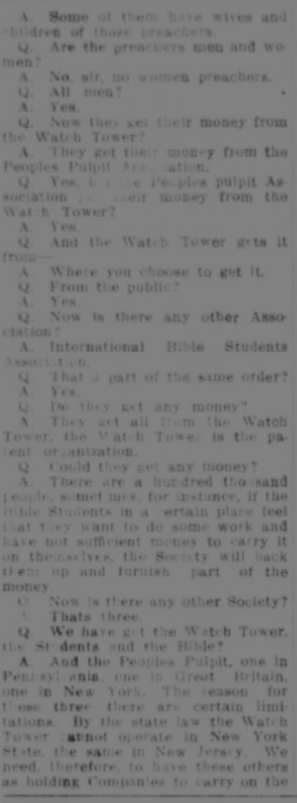Q. Where did the Watch Tower Society get the idea to call it “Bethel” in the first place?
A. The answer to this question is being saved, not for this post, but the next one. This will give a chance for readers to participate if they think they know the answer. We’ll ask this question on Facebook and Twitter, where we already have a couple thousand followers, and we’ll give credit to anyone who knows. The question is not as obvious as it sounds at first. We’re not asking why calling it Bethel is scripturally appropriate, or what reasons we might think we have for calling it Bethel now. We are asking why it was called Bethel at the time it was first given that name.
We learn from the 1975 Yearbook that the adjacent buildings, 122 and 124 Columbia Heights, had already been owned together since 1908. It was in 1911 when a rear addition was added.
*** yb75 pp. 52-53 Part 1—United States of America ***
For a time the Society’s headquarters staff was housed largely at 124 Columbia Heights. Later, the adjoining building at 122 Columbia Heights was purchased, enlarging the Bethel home. The year 1911 saw the completion of a rear addition extending nine floors down a precipice to Furman Street. It provided much more space for living quarters and other facilities, including a new dining room.
We also gather from a 1969 Watchtower magazine that it was in 1908 when the two adjacent 4-story buildings were purchased, and that they were converted into a home for about 30 persons in 1909, and then torn down to put up a single 9-story structure, housing about 180 persons in 1927.
*** w69 6/15 p. 380 Expansion at Headquarters of Jehovah’s Witnesses ***
During the dedication program the president of the Watchtower Society, Nathan H. Knorr, described the expansion of the headquarters of Jehovah’s witnesses since its move to Brooklyn in 1909. In 1908 the old four-story brownstone parsonage of Henry Ward Beecher at 124 Columbia Heights and a similar building adjoining it had been purchased. These were converted into a home for the Society’s headquarters staff of thirty persons.
But due to rapid expansion, in 1911 spacious new housing accommodations adjoining the rear of the home on Columbia Heights were completed. Then in 1927, N. H. Knorr explained, further expansion at headquarters necessitated tearing down the buildings on Columbia Heights and putting up a new nine-story structure there, providing, in all, approximately 120 rooms. At that time there were about 180 members of the headquarters family.
So the number was 30 in 1909, and “rapidly expanded” by 1911. We also read that it was about 180 in 1927.
So how many in 1917? That would depend on how rapidly it had expanded by 1911. Another factor would be the number of persons affected when Rutherford dismissed some persons in January 1917 and a larger number left by July 1917. (For reasons many readers will already be aware of, and which we will detail in later posts.)
Based on the description of the expansion, and the number of intervening years, we should expect the number to be between 30 and 180, probably under 110, which would be the midpoint between 30 and 180.
But we can get a pretty good sense of the actual number from the 1920 Census. Here we have 83 persons listed at 122 and 124 Columbia Heights.
It was actually split up as 3 persons at 122, and 80 persons in 124. We would expect that the persons listed here in January 1920 would be a fair reflection of the persons who had remained after July 1917. The Census includes information about their age, gender, and national backgrounds, too.
Most JWs will also recognize many of these names as persons they have read about, and even met in many cases:
One more rarely seen source of information about Bethel, 100 years ago, is the testimony of Charles Taze Russell in 1914 when he hoped to win a libel suit against a local Brooklyn newspaper.
Recall that 1914 was the culmination of a lot of growth and activity by the Watch Tower Society due to the expectations for October 1914. Naturally, when 1914 proved disappointing, many of these persons left. In addition, 1914 was a year when the Watch Tower Society was spending as if there were no tomorrow. Of course, they would never have spent so much on “moving pictures” for the “Photo-Drama of Creation” if they thought they would need this money in 1915.
Due to those expenses, a lot of persons were laid off from Bethel by the end of 1914. We would expect the numbers in the middle of 1914 to be even higher, then, than the numbers in early 1917. That’s exactly what the evidence from Russell’s testimony bears out, along with a few more hints about the activity there.
These images below may be hard to read, but they indicate about 40 persons who belong directly to the Peoples Pulpit Association who live at “Bethel” in addition to another 60 or 70 who are assistants, wives and helpers to the ministers. This would be 100 or 110 living there in early 1914, and therefore the number of 86 in the 1920 Census appears to be a reasonable reflection of the persons there in 1917.








